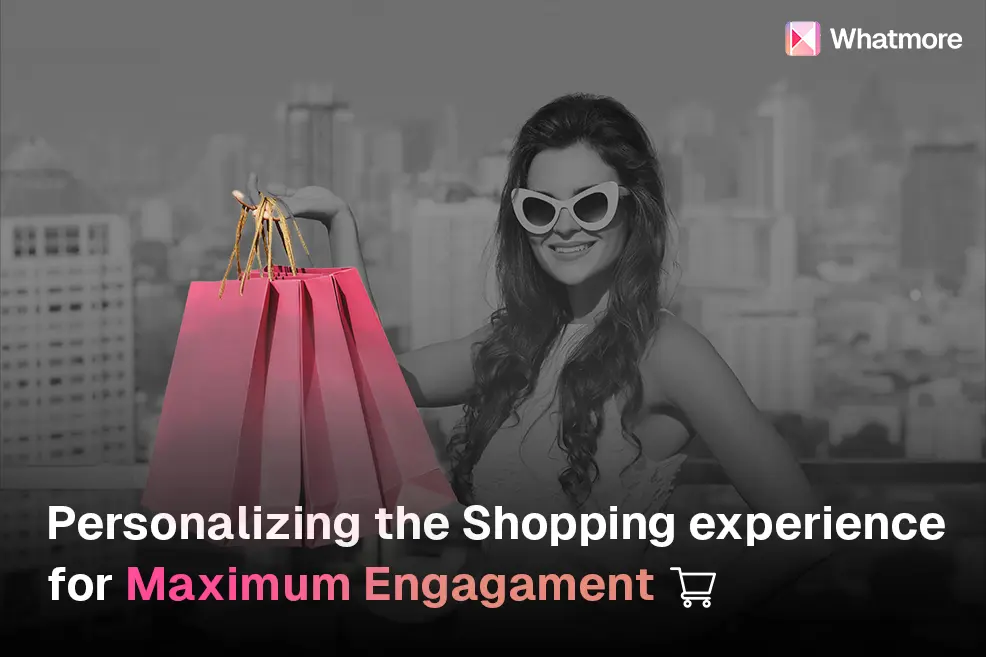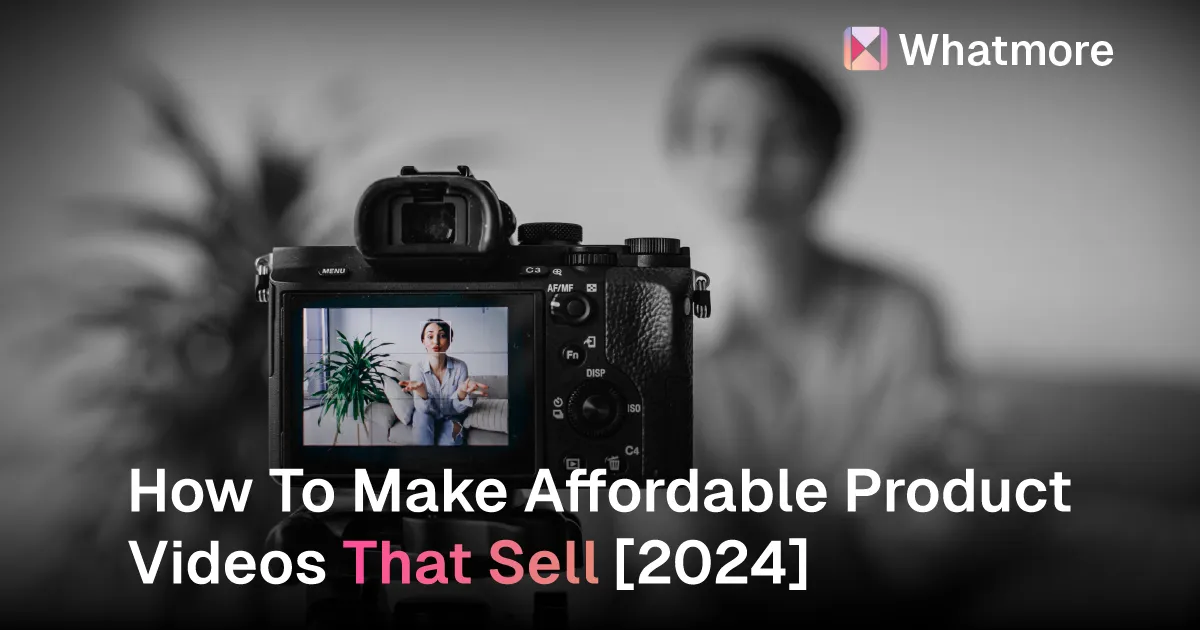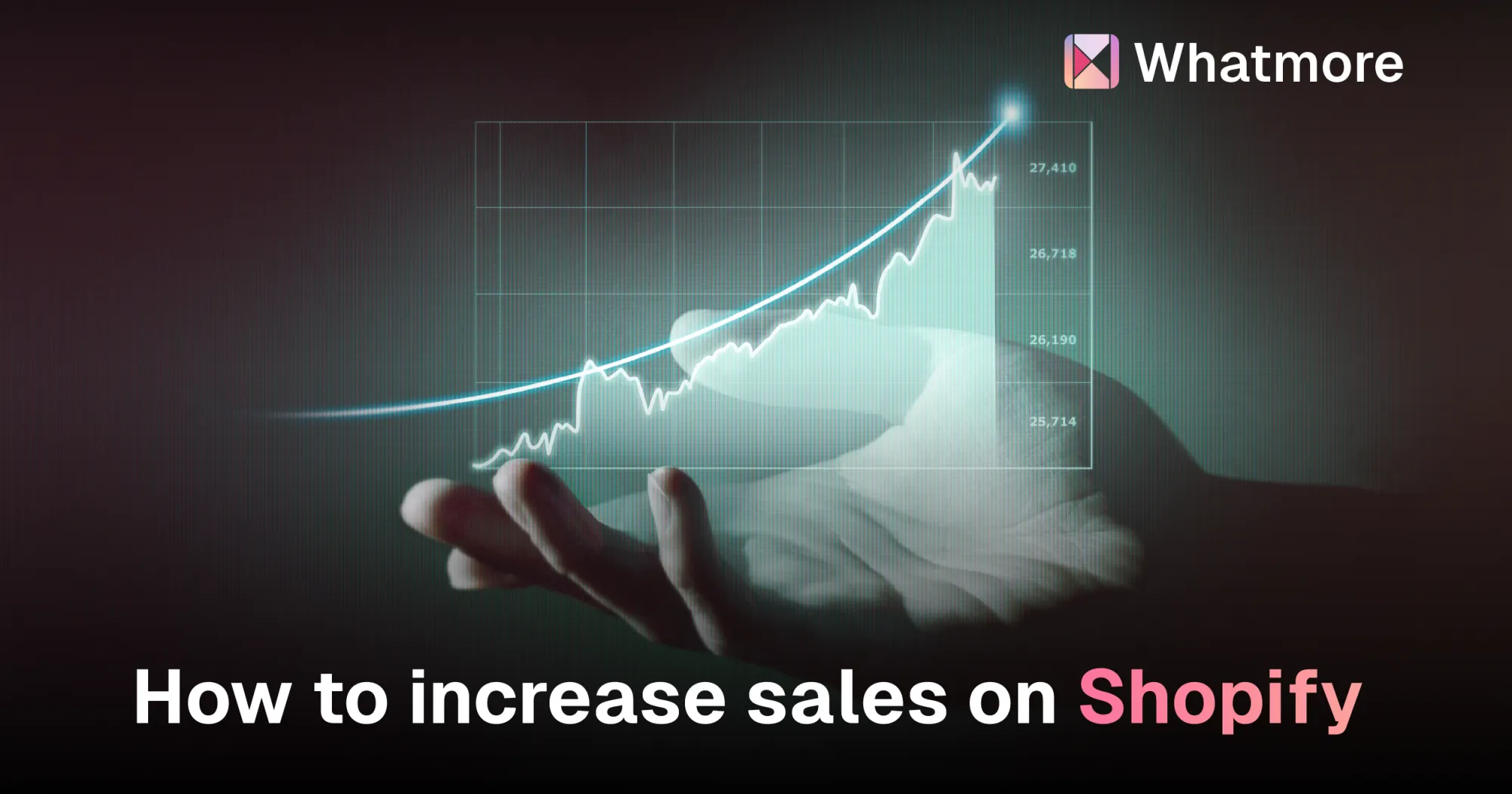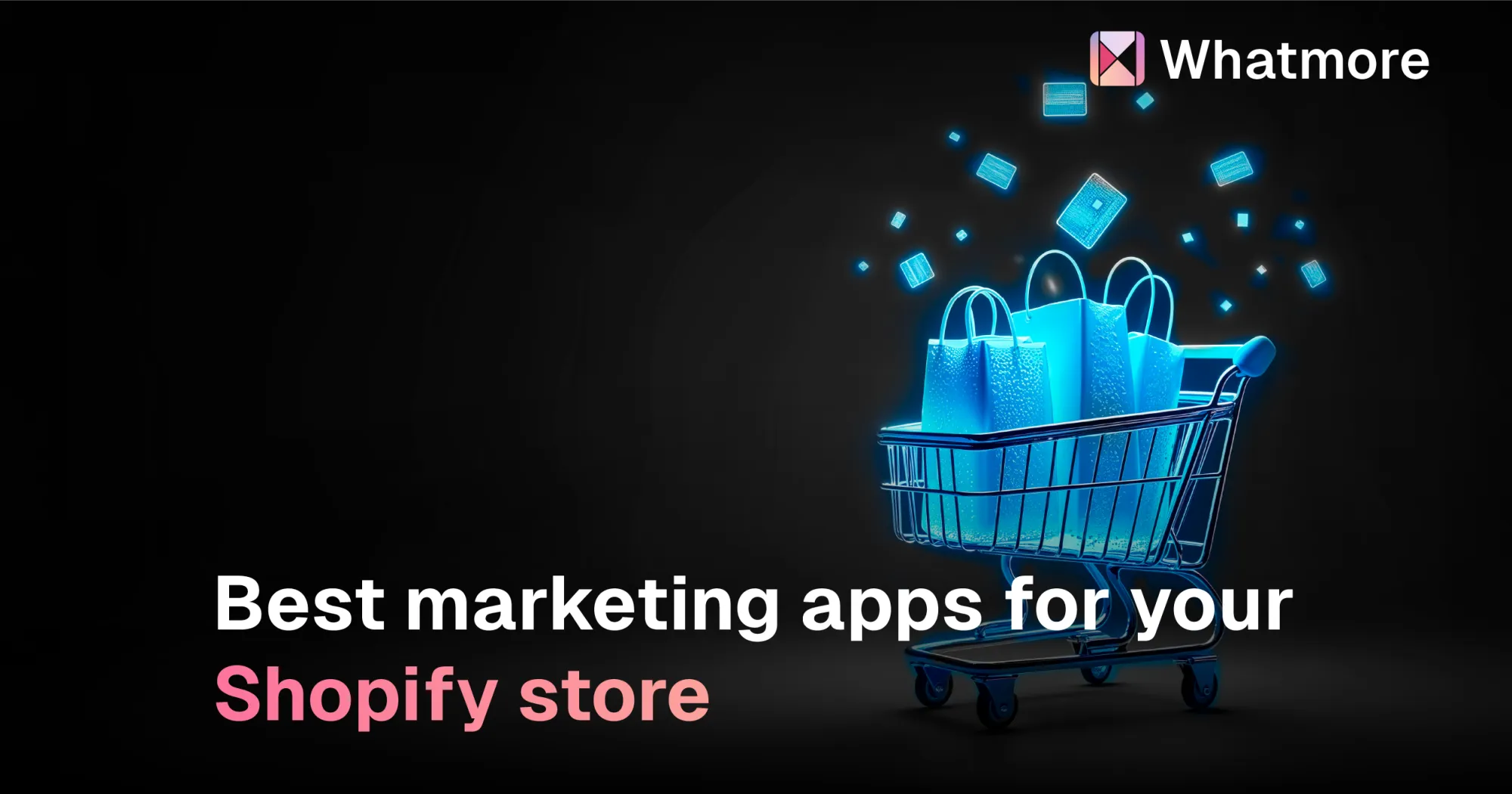When Starbucks first came to India, everyone went and bought coffee just to post pictures of their personalized drinks online. Even if they didn't love coffee, they would go to Starbucks to get a drink with their name on it. This is the power of personalization. Starbucks guessed it could distinguish itself from hundreds of coffee shops simply by providing a personalized shopping experience to its customers. And it was correct. It has been over a decade since then, and personalization has now become indispensable for a good customer experience. As per Salesforce, 66% of consumers expect companies to know their specific requirements.
What does personalizing the shopping experience mean?
Brick-and-mortar stores have always known the importance of personalization. The staff often knows your name and preference and says 'welcome back' with a smile if you're a regular. If not, they have shopping assistants to offer you personalized recommendations. This human and personal touch makes a customer loyal to the store. As an e-commerce store owner, you can improve customer loyalty by replicating this experience online. But how can you do it? It's not like you can see your customer's faces online. This is where data comes in. You can easily create a personalized shopping experience for your customers by leveraging past data.

Personalizing the online shopping experience means tailoring every aspect of a customer's interaction with your brand to match their unique needs and preferences. This personalization should happen at various stages of the customer journey, from browsing to product recommendations to checkout and post-purchase follow-up. But how do you get started with it?
How to provide a tailored shopping experience?
Implementing a personalized shopping experience requires significant time and investment. You need to align all the teams to work towards a single goal- improving the shopping experience for your customers. But the payoff is huge. Personalizing the shopping experience improves customer experience, loyalty, and conversions. 98% of marketers claim that personalization has helped their companies improve customer relationships. Here's how to personalize your shopping experience in 6 key steps.
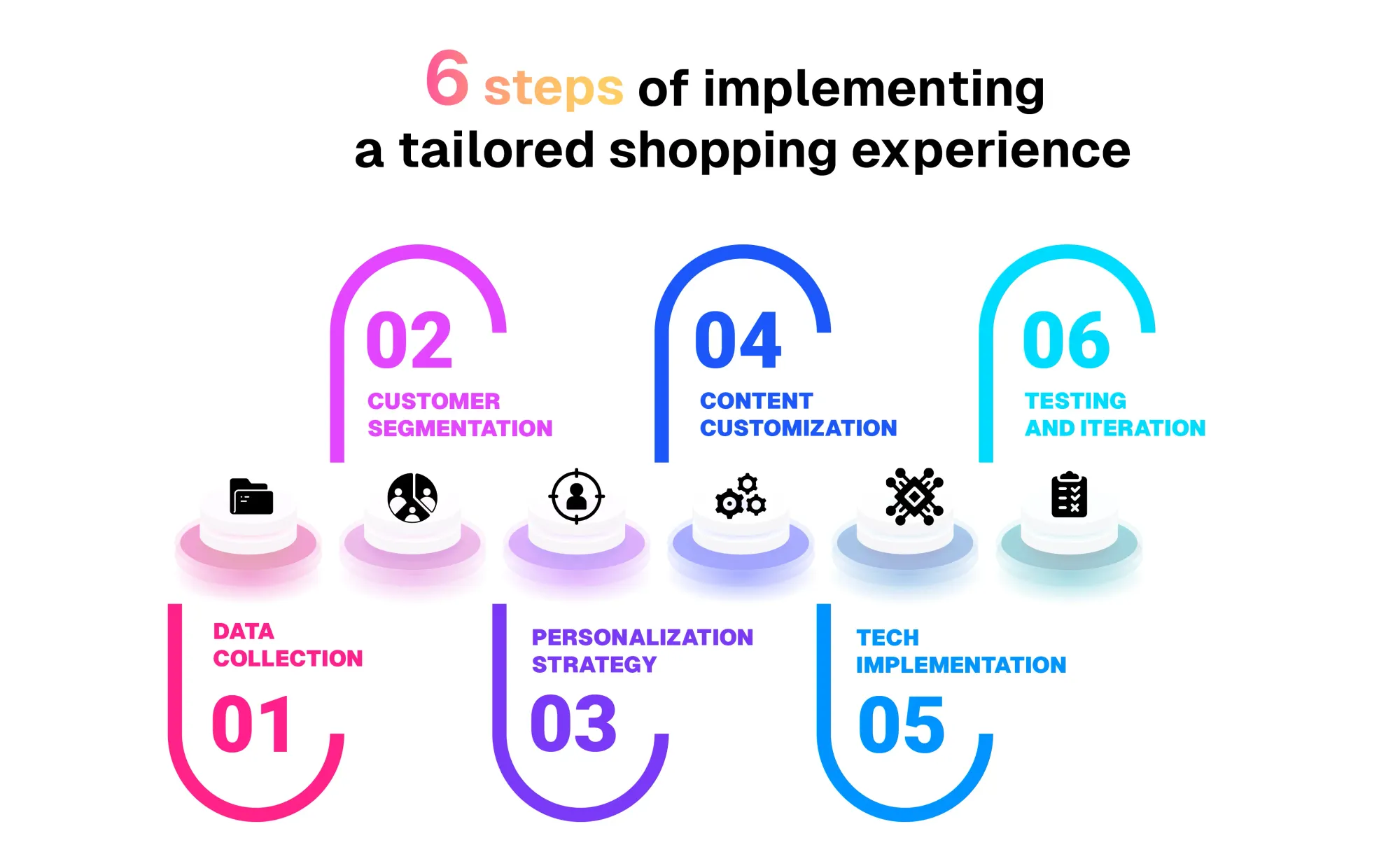
Data collection
The first step is to collect relevant customer data. This includes demographic information, purchase history, and browsing behaviour. This data is the foundation of your personalization strategy, so it's important to ensure it's accurate.
Customer segmentation
This means dividing all your customers into segments based on their characteristics and similarities. This will help you create the right experience for the right customer segment.
Personalization strategy
The next step is to create a clear strategy outlining how you'll set up personalization across all touchpoints like website, emails, ads, and customer service. This is where you must align all your teams for cohesive and effective implementation.
Content customization
Create content, offers, and product recommendations to match each customer segment's preferences and needs.
Tech Implementation
This means buying the right software to enable personalization at scale. You'll need CRM and marketing automation software like Hubspot and CleverTap to make this happen.
Testing and iteration
After a quick trial, it's time to go live! But the work doesn't end there. Test and collect feedback on different personalization strategies and communication to improve relevancy and performance and ultimately improve conversions.
What are the possibilities with personalization for your e-commerce brand?
You can improve the shopping experience for your customers by-
- Personalizing Product Recommendations
Suggest products your customer is likely to be interested in by analyzing past purchases, browsing history, and demographic data
- Personalized communication
Tailor the content in your emails and messages to your customers' interests and preferences.
- Personalized offers and discounts
You can provide exclusive deals to retarget and award loyal customers. You can also engage other customers based on their purchase history and loyalty status.
- Share tailored content
Share articles, videos, and other relevant content with your customers based on their purchase history.
- Dynamic pricing
Maximize sales by implementing an individualized pricing strategy based on demand, purchase history, location, and customer behaviour.
- Customized product features
If possible, allow customers to personalize products with their names to deliver an outstanding product experience. This works exceptionally well for clothing and jewelry e-commerce brands.
Creating a more relevant, enjoyable, and personalized shopping experience will improve customer engagement and satisfaction and ultimately drive more sales.
Personalized shopping experience- the final frontier
As we've covered, customers expect personalization from brands. Look at these stats.

- 83% of shoppers are willing to share their data to create a more personalized experience (Accenture)
- 66% of shoppers want businesses to know their specific requirements (Salesforce)
- 98% of marketers say that personalization improves customer relationships (Evergage)
- 43% of companies prioritizing personalization see higher customer retention (Adobe)
Personalization is not a good to have anymore. It's a must-have. E-commerce is a cluttered space where all brands fight to acquire customers and keep them coming back for me. By using data and tech to deliver a personalized shopping experience, you can build a stronger connection with your customers.
Want to boost sales with shoppable videos? Contact us and we'll do the heavy lifting for you.
